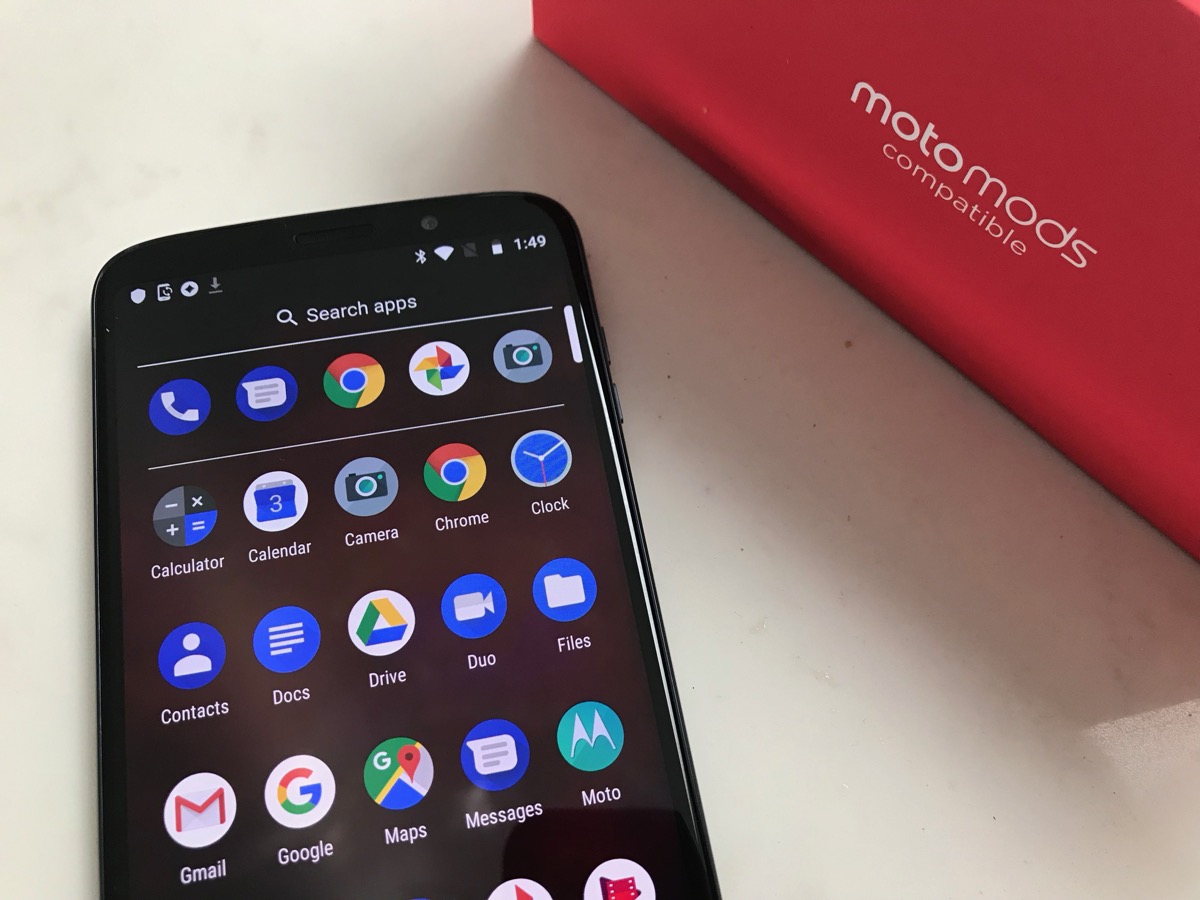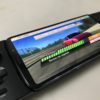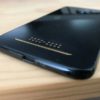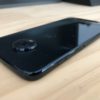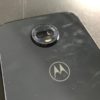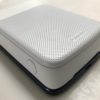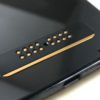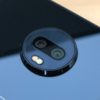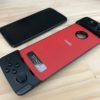Motorola have a bit of a sordid history when it comes to smartphones. The once mobile phone behemoth behind iconic handsets like the StarTac and the super-sleek Razr sort of dropped the smartphone ball, much like fellow 90’s mobile mogul Nokia, and was rescued through a series of acquisitions.
Today Motorola, the phone brand, lives on under the wing of Chinese PC manufacturer Lenovo. Over the past few years it’s seen quite the resurgence helped in no short part by the advent of their Z Play smartphone series and the easily attached accessory series known as “Moto Mods”.
[wp_ad_camp_4]Their current flagship is the Moto Z3 Play, released late last year, which at A$799 RRP represents a solid mid to high tier smartphone in today’s ri-donc-u-lous anything up to A$2k market. Decked out with a 6.6″ AMOLED screen in a stupidly thin 6.75mm and virtually borderless chassis the Z3 is certainly no slouch but to entice people over it’ll need to offer a lot more than a cute display.

Its cause is hardly done any favours by its powering SoC, a Snapdragon 636. Sadly by today’s lofty standards it’s already a dinosaur, superseded almost before it was released. It will of course do (more than likely) everything you need it to do and has no issue running multiple applications (including memory hugging crap-monsters like Chrome) and a bunch of games such as Real Racing 3. What it won’t do is play Fortnite. The 636’s Adreno 509 GPU isn’t supported, which in today’s world is a borderline disaster and could mean the downfall of any phone before it hits the market.
Moto Z3 Play specificationsAesthetically the phone quite nice to look at, enclosed in a gorilla glass front and back akin to a modern day iPhone. Unfortunately, just like those, it too is extremely susceptible to finger prints and comes out looking more like a dull, grubby mess more than a glorious, mirrored finish you see in photographs.

It is remarkably thin however and, to my knowledge, has never been hampered by any “bending” issues like some other cough iPad cough products have seen of late. Thin enclosures are somewhat of a personal bugbear as they generally mean sacrificing bragging rights over a few tenths of a millimetre for that of battery size. The Z3 has a 3000mAh battery, which I would normally say proves my point, but has a remarkable ability to retain life for much longer than I’d expected under heavy use, better so than an iPhone. A lot of this could come down to it’s Android 8.1 install versus its predecessor, which had the same capacity battery but an older OS, regardless most people should have no issue eking out a normal day’s life from the Z3.
What it won’t do is play Fortnite, which in today’s world is a borderline disaster and could mean the downfall of any phone before it hits the market.
The phone’s wafer like appearance has also led to a little creativity with the placement of its fingerprint sensor that I quite enjoyed. The Z3 has the sensor on its side, just beneath the volume buttons in a position that your hand would naturally grasp as you were to pick the phone up. It worked remarkably well and I lamented going back to my ancient iPhone 7 with its home button and thick screen bezels to accommodate it once finished with the test unit.

There are other security options available to use besides the fingerprint sensor if you wish. Android’s normal security PIN, password or pattern is there as well as a camera mode but without the inclusion of depth sensors and the refined abilities of Apple’s FaceID system I’d be giving that one a wide berth.
Of course with thin chassises comes no space for a headphone jack, which if you’re still banging on about you need to build a bridge already, we’ve moved on people. The do nicely include a USB-C to headphone jack adaptor for you though, which in turn is kind of handy as they have a pair of 3.5mm headphones in the box that requires it.

The phones true mid-tier star comes in the form of its dual-rear camera system. Combining a 12-megapixel (f/1.7) and 5-megapixel set of lenses the Z3 embodies the ability to take photos across a wide range of settings with moderate to admirable results. The dual lens system also allows it have a dedicated portrait mode that for my mind has no issues beating out Apple’s with the added flexibility of manual modes being easily accessible and baked in to the standard software.
The camera system is going to be winning any DXOmark awards anytime soon but for its price point it will hold its own against its competitors and offers a valid reasoning for the phones cost. They’ve also done a decent enough job of centring the lenses on the back, which naturally extrude from the phone’s rear like a hunch-back, to allow the phone to rest normally and not wobble about as Apple continue to insist upon. It’s certainly not perfect to have the “bump” but it’s not as bad as it could be.
Moto Mods to the rescue?
One of the biggest selling points of any of the new Motorola smartphones is the inclusion of its Moto Mod connector on their rear. At the bottom of the Z3 and its prior iterations are a series of pins that connect hardware accessories to use with the phone.

In Australia at the moment there are sixteen Moto Mod accessories available ranging from extended battery packs to gamepad controllers to Hasselblad camera lenses and projectors. Each differ in price but those with basic functionality hover around the A$150 mark.
The idea is solid but does of course require enough parties to buy into the connector to warrant any accessories to be made. They’ve done relatively well though and included in our test pack was a speaker from JBL, GamePad from Motorola themselves and a instamatic camera printer Polaroid.

The speaker was OK but was more useful for its kickstand than the sound it produced and the camera was great fun albeit limited to only being able to hold 10 pieces of film at a time whilst the gamepad was pretty damn awesome and makes only reaffirms why the Switch is so successful. Games do need to support it though, which Motorola help you find through one of the garbage apps installed on the phone and there are some good ones in there but hey, no Fortnite (not on the Z3 anyway).
The other annoying thing is that the Moto Mods all need charging, or at least the ones we had did. They have USB-C ports in them so they’re all in the same, nice, port eco-system but it’s just a pain in the ass and I’m surprised they don’t just draw from the phone.

It’s a neat idea and Motorola are letting you choose one of a list of Moto Mods for free if you buy the phone outright from them, which isn’t bad value. The problem with it is that its a proprietary connector on a proprietary phone that hasn’t had the traction for more to buy in and unless you’re Apple or Samsung others are unlikely to buy in.
To buy or not to buy? That’s the question.
The Motorola Z3 Play is certainly worth a look at if you’re in that A$600-$800 budget wheelhouse. Or at least it was when it was released. Word is that we’re about to see a Z4 announced at MWC later this month that will likely bump up the specs here and there but keep it in that same mid-tier range.
If that’s the case then the Z3 will undoubtably drop and when that happens, then it’s definitely worth a solid look at. Just like the Z3 did to the Z2 this phone sold more when it’s newer version was announced and I fear history is about to repeat itself.
